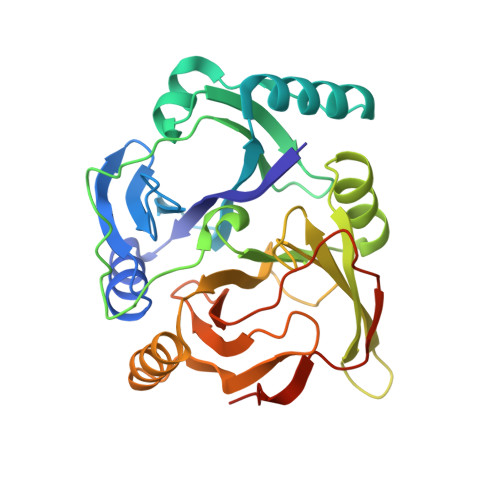Identification and analysis of a bottleneck in PCB biodegradation
Dai, S., Vaillancourt, F.H., Maaroufi, H., Drouin, N.M., Neau, D.B., Snieckus, V., Bolin, J.T., Eltis, L.D.(2002) Nat Struct Biol 9: 934-939
- PubMed: 12415290
- DOI: https://doi.org/10.1038/nsb866
- Primary Citation of Related Structures:
1LGT, 1LKD - PubMed Abstract:
The microbial degradation of polychlorinated biphenyls (PCBs) provides the potential to destroy these widespread, toxic and persistent environmental pollutants. For example, the four-step upper bph pathway transforms some of the more than 100 different PCBs found in commercial mixtures and is being engineered for more effective PCB degradation. In the critical third step of this pathway, 2,3-dihydroxybiphenyl (DHB) 1,2-dioxygenase (DHBD; EC 1.13.11.39) catalyzes aromatic ring cleavage. Here we demonstrate that ortho-chlorinated PCB metabolites strongly inhibit DHBD, promote its suicide inactivation and interfere with the degradation of other compounds. For example, k(cat)(app) for 2',6'-diCl DHB was reduced by a factor of approximately 7,000 relative to DHB, and it bound with sufficient affinity to competitively inhibit DHB cleavage at nanomolar concentrations. Crystal structures of two complexes of DHBD with ortho-chlorinated metabolites at 1.7 A resolution reveal an explanation for these phenomena, which have important implications for bioremediation strategies.
Organizational Affiliation:
Markey Center for Structural Biology, Department of Biological Sciences, Purdue University, West Lafayette, Indiana 47907-1392, USA.

















